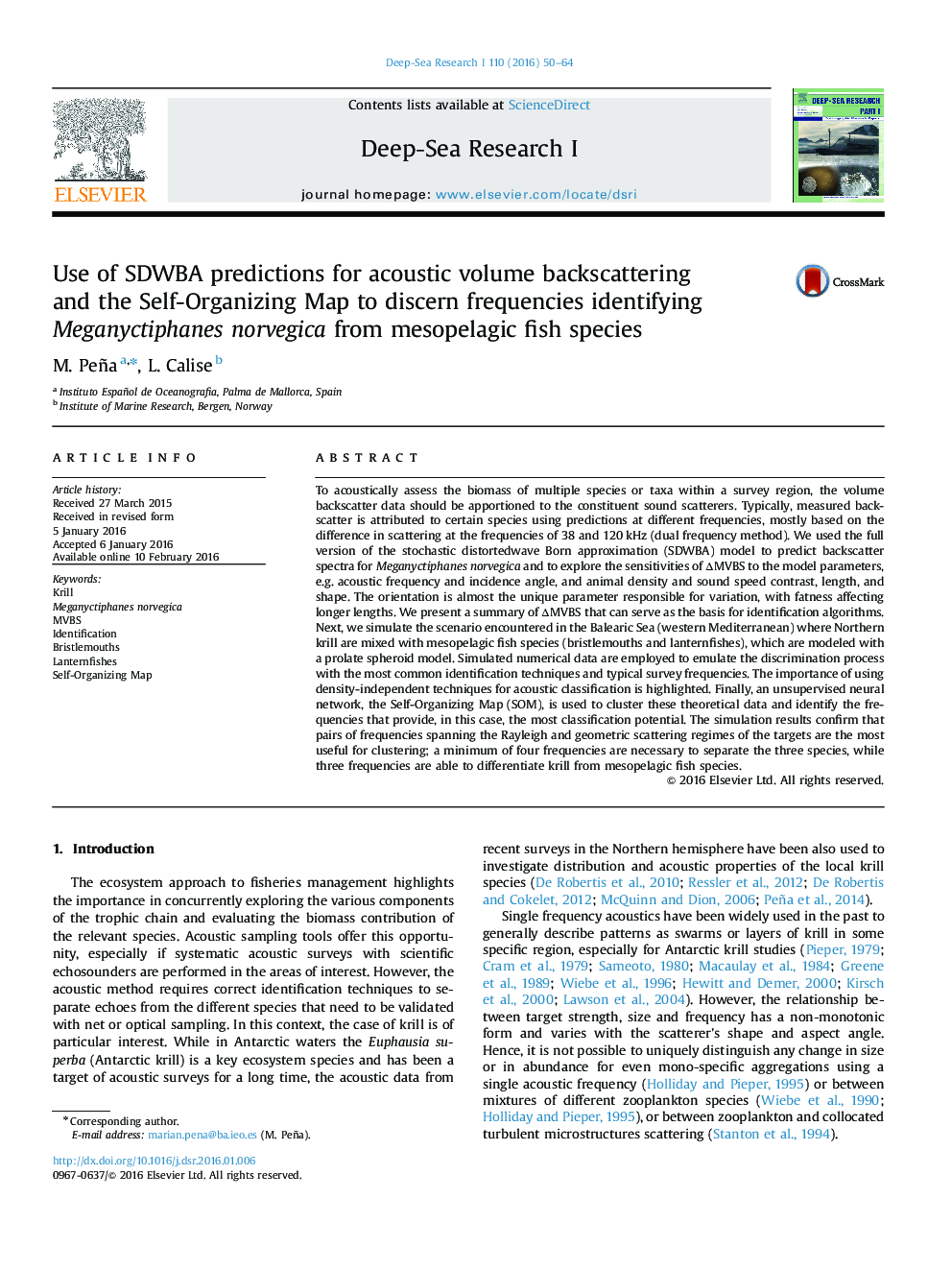| کد مقاله | کد نشریه | سال انتشار | مقاله انگلیسی | نسخه تمام متن |
|---|---|---|---|---|
| 4534454 | 1626320 | 2016 | 15 صفحه PDF | دانلود رایگان |

• Northern krill ΔMVBSΔMVBS values using the full SDWBA model are provided.
• Orientation is the most relevant parameter when using ΔMVBSΔMVBS values.
• Discrimination of krill and mesopelagic fish species is tested with scatterplots and the dual-method.
• The Self-Organizing Map is introduced as a tool to discern the most useful frequencies.
• The simplified SDWBA version is not valid for low frequencies or lengths.
To acoustically assess the biomass of multiple species or taxa within a survey region, the volume backscatter data should be apportioned to the constituent sound scatterers. Typically, measured backscatter is attributed to certain species using predictions at different frequencies, mostly based on the difference in scattering at the frequencies of 38 and 120 kHz (dual frequency method). We used the full version of the stochastic distortedwave Born approximation (SDWBA) model to predict backscatter spectra for Meganyctiphanes norvegica and to explore the sensitivities of ΔMVBSΔMVBS to the model parameters, e.g. acoustic frequency and incidence angle, and animal density and sound speed contrast, length, and shape. The orientation is almost the unique parameter responsible for variation, with fatness affecting longer lengths. We present a summary of ΔMVBSΔMVBS that can serve as the basis for identification algorithms. Next, we simulate the scenario encountered in the Balearic Sea (western Mediterranean) where Northern krill are mixed with mesopelagic fish species (bristlemouths and lanternfishes), which are modeled with a prolate spheroid model. Simulated numerical data are employed to emulate the discrimination process with the most common identification techniques and typical survey frequencies. The importance of using density-independent techniques for acoustic classification is highlighted. Finally, an unsupervised neural network, the Self-Organizing Map (SOM), is used to cluster these theoretical data and identify the frequencies that provide, in this case, the most classification potential. The simulation results confirm that pairs of frequencies spanning the Rayleigh and geometric scattering regimes of the targets are the most useful for clustering; a minimum of four frequencies are necessary to separate the three species, while three frequencies are able to differentiate krill from mesopelagic fish species.
Journal: Deep Sea Research Part I: Oceanographic Research Papers - Volume 110, April 2016, Pages 50–64